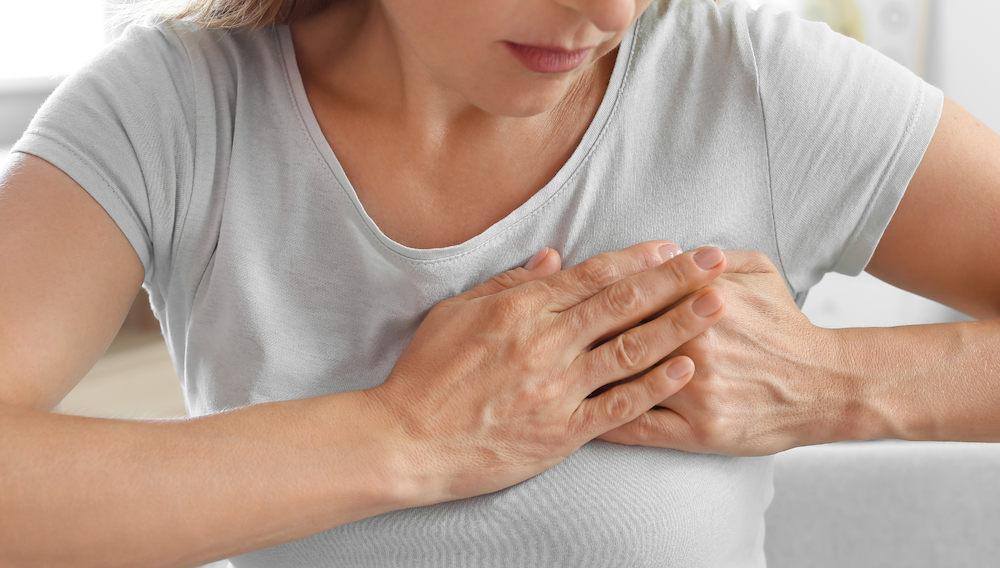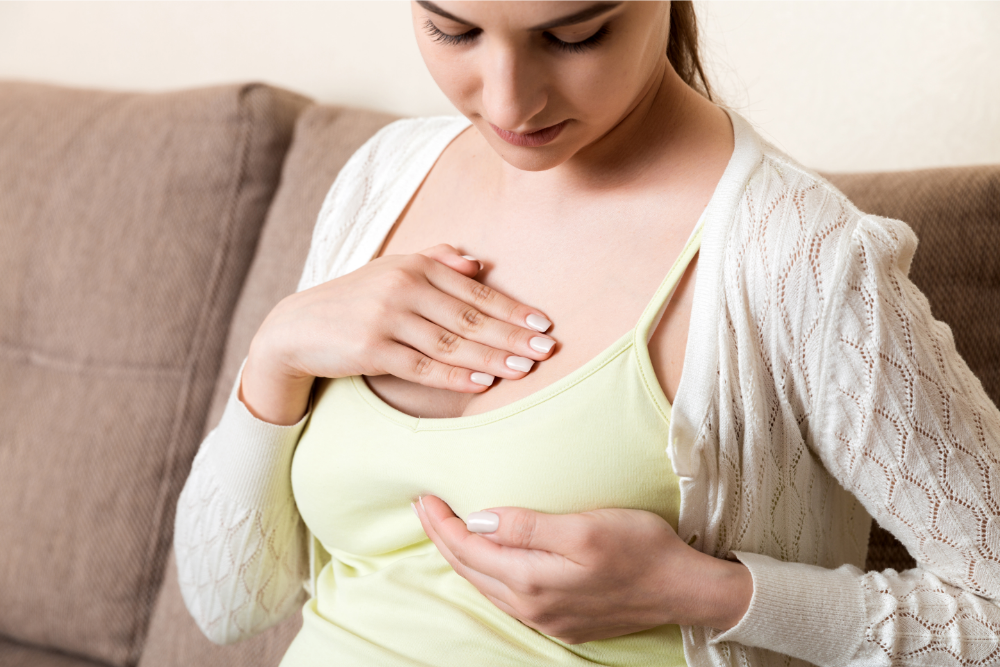When it comes to breast health, most women immediately think of breast cancer. However, there are many other breast issues that can arise. Some of the most common breast problems include mastitis, injury, cysts, and fibrous tissue. Learning more about these issues can make them less scary if and when they occur.
Mastitis
Did you know that both men and women can experience mastitis, an inflammation of breast tissue? More commonly, mastitis occurs in women and includes an infection along with the swelling. The symptoms include breast pain and swelling, redness, and possibly fever and chills. If you are breastfeeding, there may be a burning sensation while you are nursing your baby.
Blocked milk ducts are the most common cause of mastitis, this allows a place for bacteria to grow. It can also occur with the direct entry of bacteria into the breast. If untreated, the infection can turn into an abscess. This may require surgical drainage. Most often warm compresses to the affected area and continuing to pump/ breastfeed will allow resolution of the blockage.

Antibiotics and pain relievers help clear up and treat mastitis. To prevent mastitis, you will want to take care of the skin around the nipple—especially if you are nursing a baby. Inflamed, chapped, or cracked nipples can provide a path for bacteria to enter the breast. Proper nutrition and sleep can help you stay healthy while nursing. Your nursing technique is also important, so a consultation with your obstetrician or a lactation coach may be helpful.
Breast Injuries
An elbow to the chest or other trauma to the breast tissue is painful and can cause bruises and lumps. The breast can be injured while playing sports, in car accidents, or due to other mishaps. If you experience a physical trauma that causes pain and bruising in your breasts, see your doctor to have it checked out. Watch for signs of lumps following the injury, too.
Benign Breast Cysts
Cysts are fluid-filled sacs that can form anywhere in the body. Breast cysts and galactoceles are two forms of cysts specific to the breasts. The causes of cysts in the breast tissue are unknown, but they appear to be associated with hormonal fluctuations. Galactoceles are milk-filled cysts that cause few issues. Breast cysts can become large and painful, but they usually feel like what they are — a fluid-filled sac that moves around when palpated. Sometimes, they are like a grape or feel larger and firmer. They may be accompanied by clear, yellow, or brown nipple discharge. If you find a cyst or lump, contact your doctor to have it evaluated.
Fibrocystic Breasts and Fibroadenoma
Two breast conditions sound similar but are very different: Fibrocystic breasts and fibroadenoma. Some women have fibrocystic breasts, a condition in which their breast tissue feels ropey or lumpy. Their breast tissue fluctuates with hormonal changes and can become tender and lumpy around the time they menstruate. It is good to know if you have fibrocystic breasts because this condition can make it difficult to detect other lumps.
Fibroadenomas are solid lumps that usually occur in women under the age of 35. They are not cancerous, but they are firm, well-defined lumps that move easily under the breast skin. They may change in size over time. Fibroadenomas can be removed to ease your mind and confirm they are benign.
Diagnosis and Treatment
When lumps and bumps are detected in the breast area or under the arm, a mammogram usually follows an examination by a doctor. A breast ultrasound can also be performed to better assess whether the lump is solid or filled with fluid. Evaluating breast lumps may also include fine-needle aspiration or a biopsy. These procedures will determine the composition of the lump.
Not Every Lump is Breast Cancer
Breast cancer represents about 1 in 3 cases of female cancers every year, but not every lump you feel is cancerous in nature. As we have outlined, many are benign cysts, lumps, or fibrous tissue. In previous posts, we have addressed how you can reduce your breast cancer risk and perform your breast cancer self-exam. By knowing your body and following the guidelines in these articles, you can feel confident that you are maintaining your breast health. Plus, you make it possible to detect breast issues like lumps and cysts early, so treatments can be more effective. If you notice any changes in your breasts, such as skin puckering or reddening, nipple discharge or crusting, and so on, be sure to talk to your doctor. The sooner you address breast issues, the better for your health and your peace of mind.
If you have any questions about breast health, write them down and talk to your doctor at your annual well-woman exam. By learning more, you will put your mind at ease and feel more in control of your breast health.


